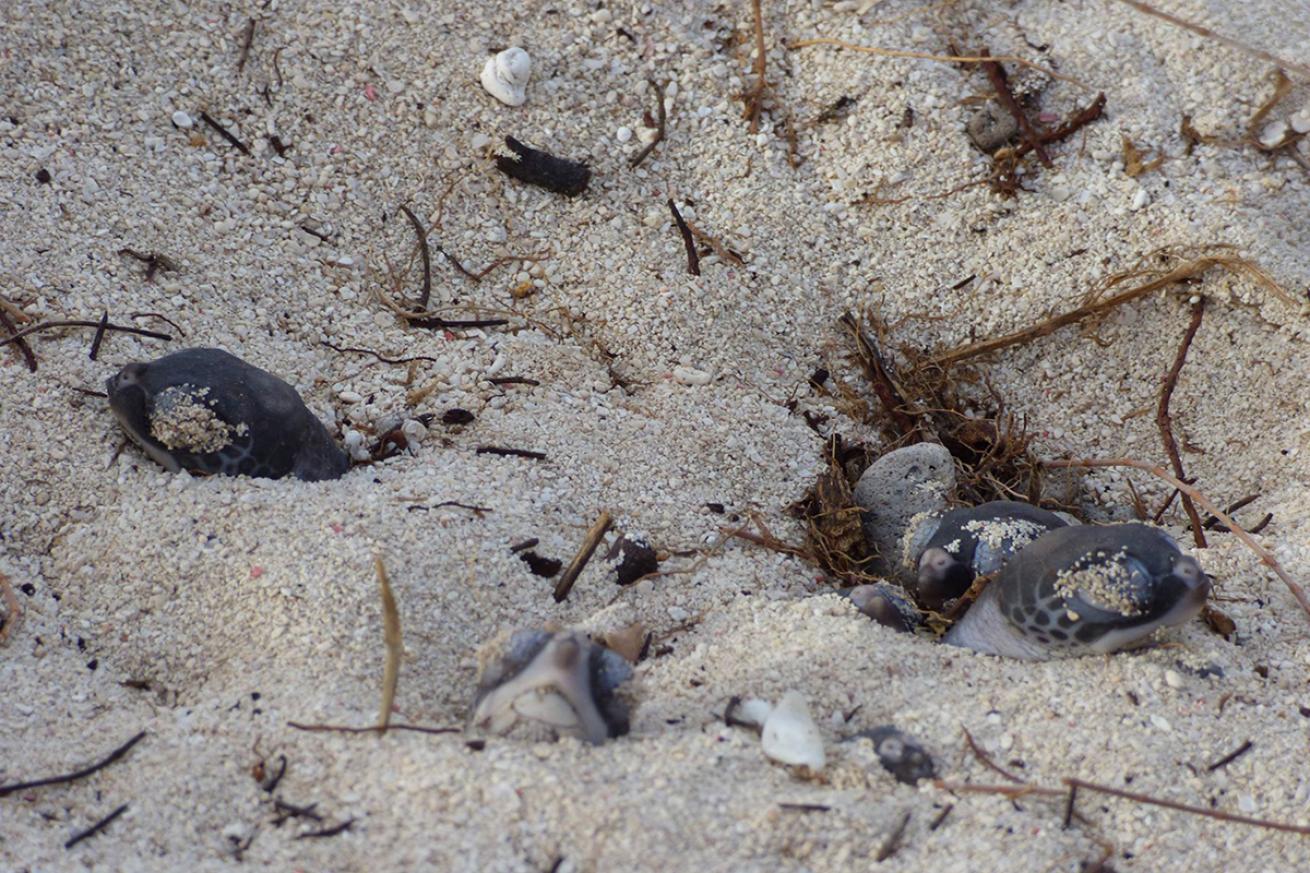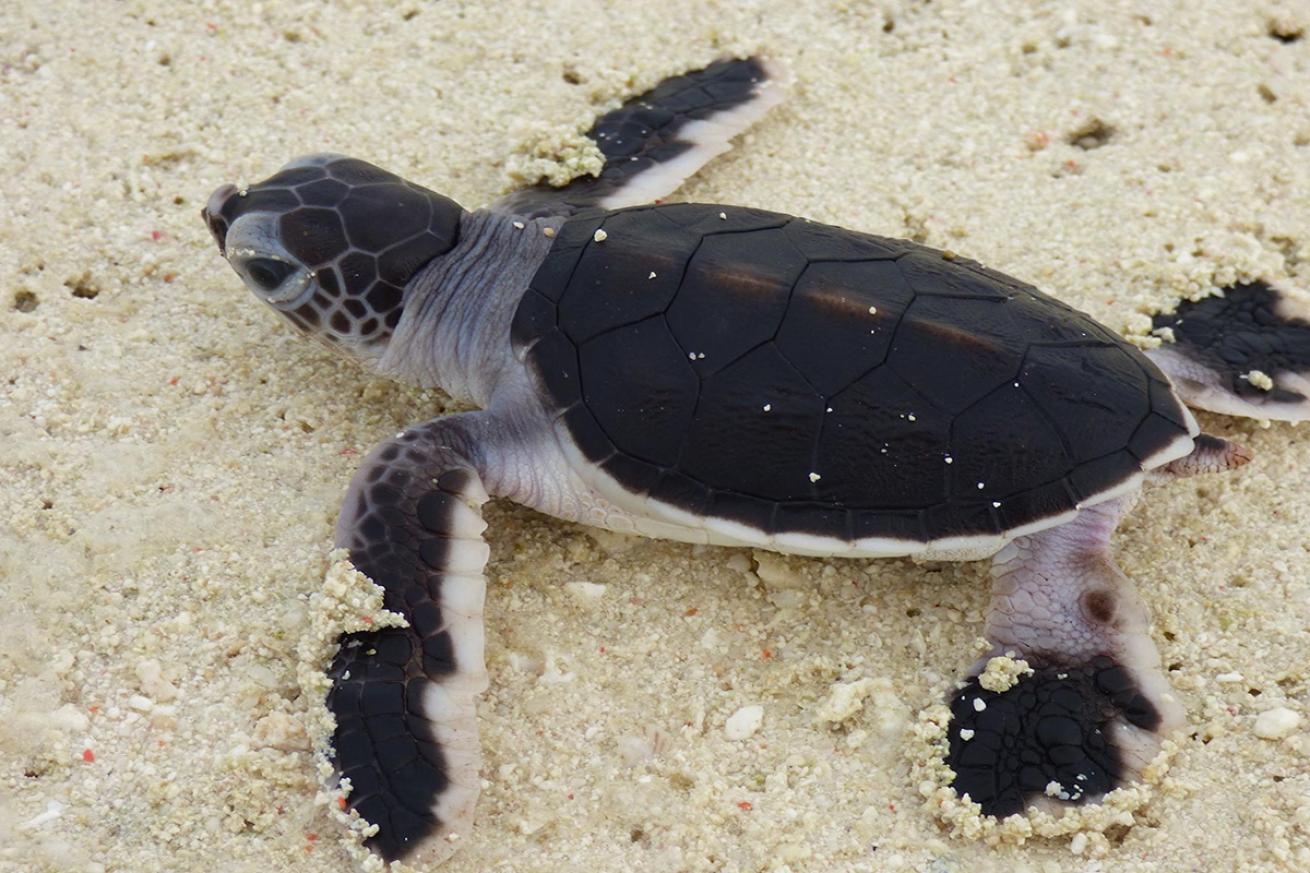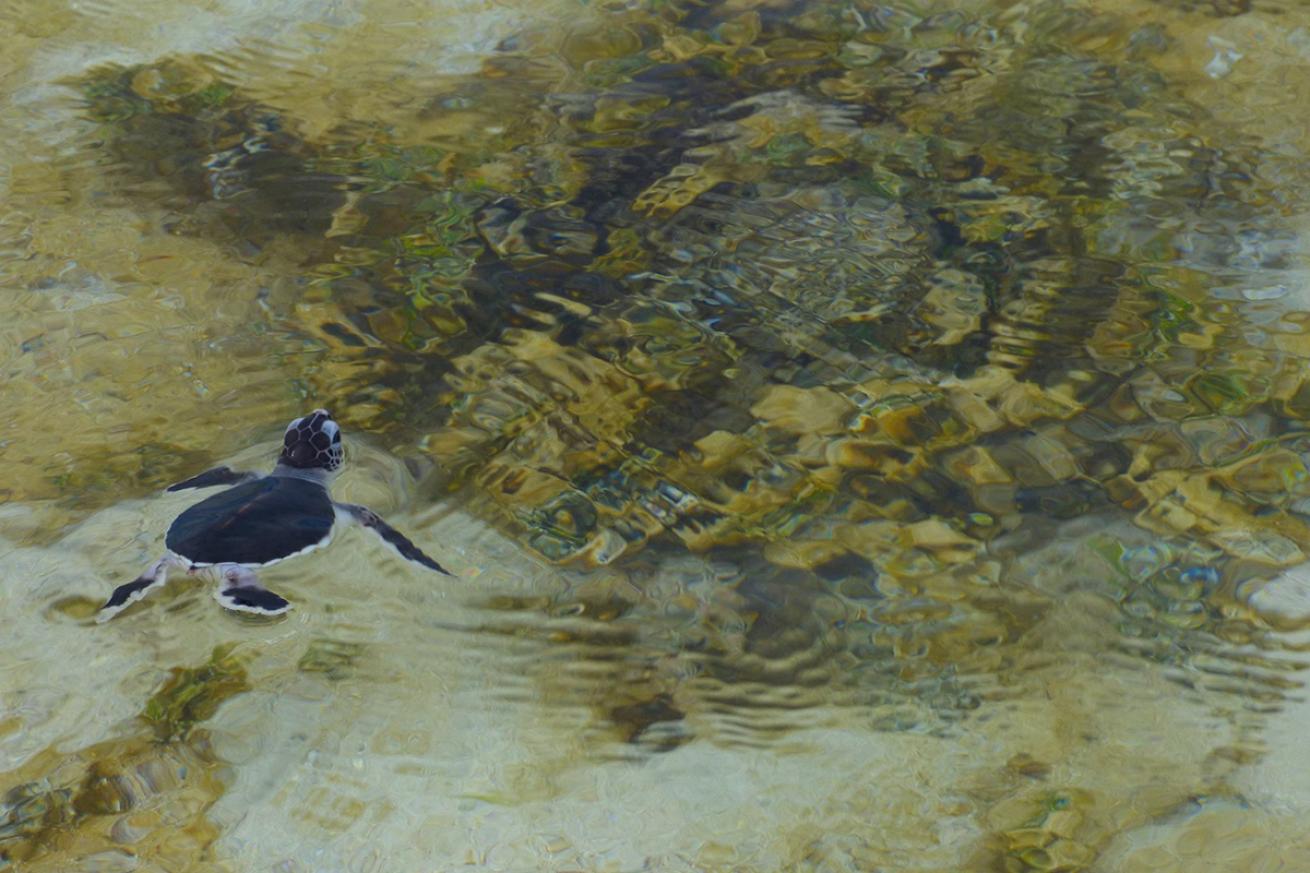What It's Like to Watch Sea Turtles Hatch in the Wild

Holley GaskillNewly-hatched sea turtles emerge from the sand.
A few tiny flippers poke out of the middle of what looks like a miniature sand volcano. I sit in the shade of Pisonia trees, alternately checking for more action from this sea turtle nest and gazing over the ocean beyond the wide beach.
I’m spending a week on Australia’s Heron Island, a National Marine Park at the southern tip of the Great Barrier Reef Marine Protected Zone. Home to an eco-resort and a science station, the island—barely half a mile long and 300 yards across—sports a tropical forest ringed by pristine beach and a shallow reef whose distant edge is marked by crashing waves. Green sea turtles nest here from November to March, females burying as many as 100 soft, ping-pong-ball sized eggs several feet deep in the sand. All eggs in a nest hatch together, the hatchlings taking several days to work their way to the surface. Watching the tail-end of the process turns out to be several hours of the occasional twitch of sand, followed by a tumbling emergence of dozens of little hatchlings almost at once.
I enjoy the wait, given the beautiful view and sense of anticipation. I want to cheer when the little guys finally begin their mad dash across the beach—until silver gulls swoop down from above, snatching up one after another. A few other beach-goers and I begin waving our arms and yelling at the birds to fend them off, following the hatchlings to the water. There, they take off like tiny motor boats, flippers churning. But the birds don’t stop, plucking the little morsels right from the sea, so some of us wade in and continue our escort until the last hatchling swims away.

Holley GaskillA hatchling makes its way across the beach at Heron Island.
All said, bird predation here is relatively minor, according to David Booth at the University of Queensland. Far more hatchlings are eaten by fish, especially sharks, during their swim across the shallows. Ornithologist Graeme Cumming of James Cook University says historic records do not indicate gulls on Heron Island, and their presence may be partially associated with people, whose trash the birds feed on.
Hatchlings face far bigger problems than predation, Booth says, including artificial light, which disorients them at night, and rising temperatures. Sea turtles become male or female based on nest temperature, with higher temperatures producing females. As beaches around the world grow hotter, eventually there may not be enough males.
I was tempted to simply gather up the little guys and carry them out into the ocean. But not only is handling a wild animal almost always a terrible idea, the hatchlings need to cross this beach to imprint on it, so females can return to lay their own nests. The dash also warms up their flippers before they face the big ocean and its predators.
Fortunately, at least some make it through the ferocity of the big blue, based on documented increases in the southern Australian population of green sea turtles since they gained protection in the 1960s. That’s good news for future visitors to Heron Island eager to play hatchling escort themselves.

Holley GaskillOcean life begins for this hatchling.
Need to Know:
Getting to and Staying on Heron Island: The island, a 2-hour ferry ride from the mainland, is open only to overnight guests.
Diving: A dive shop provides service to 21 nearby dive sites featuring coral bommies, sea turtles, reef sharks, fish, staghorn coral and more.
More Island Information: HeronIsland.com










